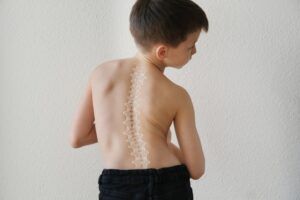Chronic neck and back pain can be debilitating, affecting daily activities, sleep, and overall quality of life. While many cases improve with non-surgical treatments, some patients may require surgery for long-term relief. At Spine, Neck, & Back Specialists, Dr. Jay Reidler and his team evaluate each patient carefully to determine when surgical intervention is necessary. Serving Bloomfield, Englewood, and Union City, NJ, we offer expert care to help patients make informed decisions about their spinal health.
When Conservative Treatments Aren’t Enough
For many individuals, non-surgical treatments such as physical therapy, chiropractic care, and pain management provide significant relief. However, when pain persists despite months of conservative care, surgery may be considered.
Signs that non-surgical options may no longer be sufficient include:
- Severe pain that significantly limits daily activities
- Weakness, numbness, or tingling in the arms or legs
- Difficulty standing or walking due to spinal instability
- Loss of bladder or bowel control, indicating a medical emergency (cauda equina syndrome)
- Structural issues such as herniated discs, spinal stenosis, or fractures that worsen over time
Patients who experience these symptoms should seek a comprehensive evaluation to determine if surgical intervention is necessary.
Common Surgical Procedures for Chronic Neck and Back Pain
Spinal surgery has advanced significantly, with minimally invasive techniques improving recovery times and reducing risks. Depending on the condition, different procedures may be recommended.
Discectomy and Microdiscectomy – These procedures remove a portion of a herniated disc that is pressing on a nerve. A microdiscectomy uses smaller incisions and specialized tools to minimize tissue damage.
Spinal Fusion – This surgery stabilizes the spine by fusing two or more vertebrae together, reducing pain caused by movement in damaged areas. It is commonly used for degenerative disc disease or severe spinal instability.
Laminectomy and Laminotomy – A laminectomy removes part of the vertebra (lamina) to relieve pressure on the spinal cord or nerves. A laminotomy is a more conservative approach, removing only a small portion of the lamina.
Artificial Disc Replacement – Instead of fusing the spine, this procedure replaces a damaged disc with an artificial one to maintain spinal movement while reducing pain.
Each procedure has specific indications, and a thorough evaluation is necessary to determine the best approach for each patient’s needs.
Benefits and Risks of Spinal Surgery
Surgery can offer lasting relief, but it is not without risks. Understanding the potential benefits and drawbacks is essential before making a decision.
Potential benefits include:
- Significant reduction or elimination of chronic pain
- Improved mobility and function
- Decreased dependence on pain medications
- Enhanced quality of life and ability to perform daily activities
However, risks may include:
- Infection or complications related to anesthesia
- Nerve damage or failed back surgery syndrome
- Extended recovery time depending on the procedure
- Possibility of requiring additional surgeries in the future
A detailed consultation with a spine specialist is crucial to weigh these factors and ensure that surgery is the right option.
Post-Surgical Recovery and Long-Term Management
Recovery from spinal surgery varies depending on the procedure and individual healing capacity. A structured rehabilitation plan is essential for optimal outcomes.
Patients are often advised to:
- Follow a tailored physical therapy program to restore strength and flexibility
- Avoid heavy lifting or strenuous activities during the healing process
- Maintain good posture and ergonomic habits to prevent future issues
- Engage in low-impact exercises, such as swimming or walking, to support spine health
Long-term management also includes lifestyle modifications such as weight management, regular exercise, and mindfulness techniques to minimize pain recurrence.
Is Surgery the Right Choice for You?
Deciding to undergo spinal surgery is a significant decision that requires careful consideration. At Spine, Neck, & Back Specialists, Dr. Jay Reidler and his team provide thorough assessments to help patients explore all available options before proceeding with surgery.
Now accepting CIGNA PPO and many other insurance plans, we are committed to providing accessible, high-quality spine care. If you are struggling with chronic neck or back pain, contact us today to schedule a consultation and discuss your treatment options.
Sources:
- Gibson, J. N. A., & Waddell, G. (2007). Surgical interventions for lumbar disc prolapse: Updated Cochrane Review. Spine Journal.
- Weinstein, J. N., Tosteson, T. D., Lurie, J. D., et al. (2006). Surgical versus nonoperative treatment for lumbar disc herniation: The Spine Patient Outcomes Research Trial (SPORT). New England Journal of Medicine.
- Mummaneni, P. V., Dhall, S. S., Eck, J. C., et al. (2014). Clinical guidelines for the management of degenerative cervical myelopathy and radiculopathy. Journal of Neurosurgery: Spine.




